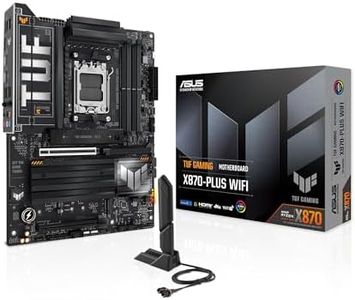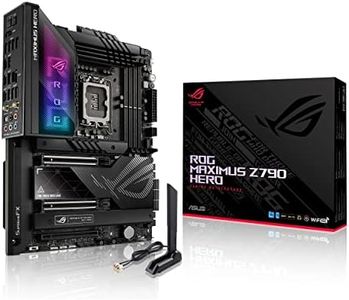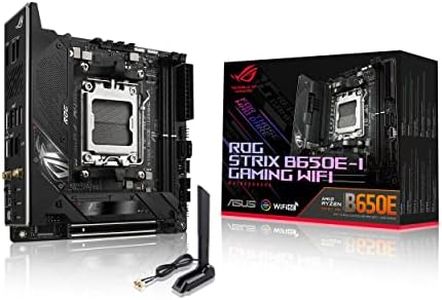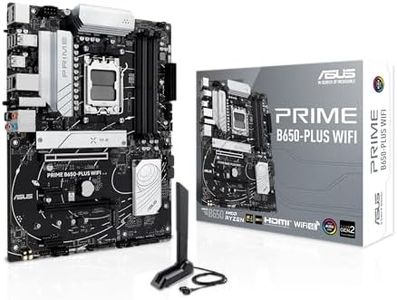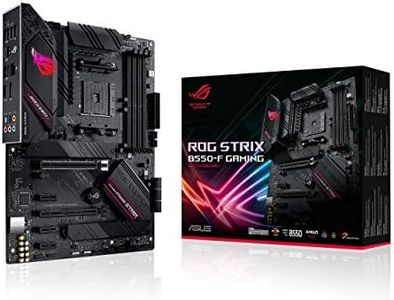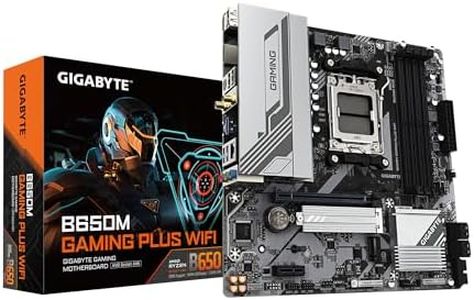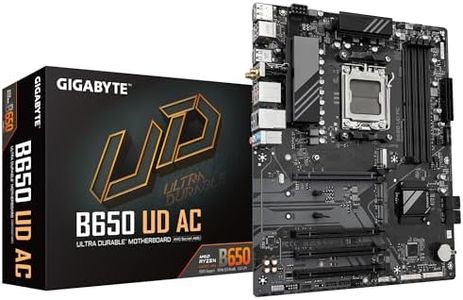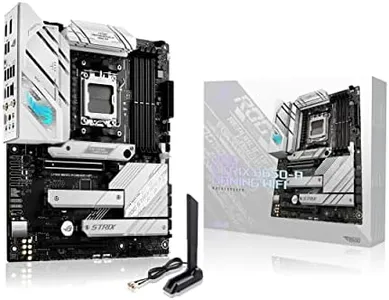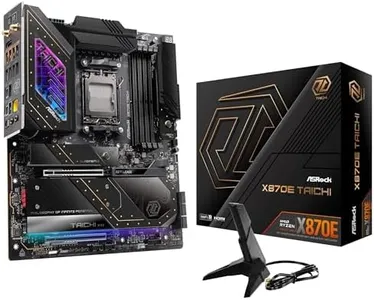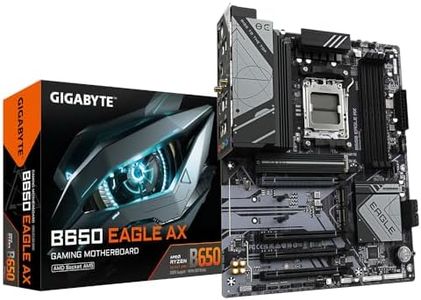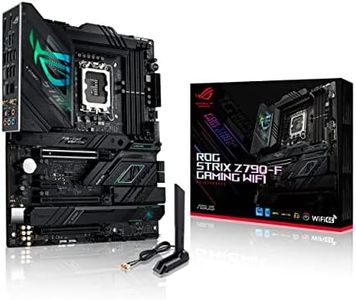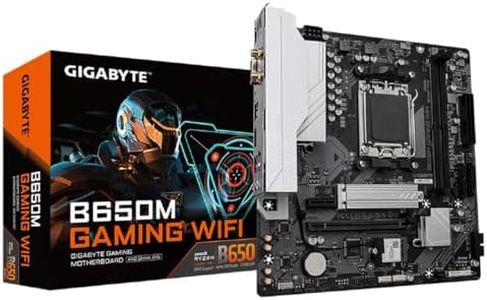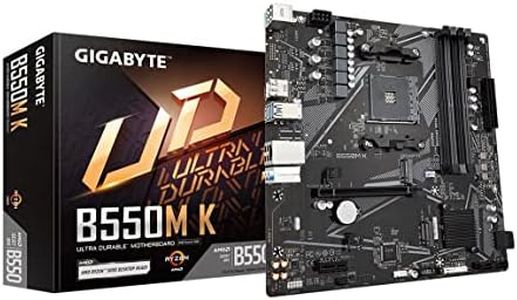We Use CookiesWe use cookies to enhance the security, performance,
functionality and for analytical and promotional activities. By continuing to browse this site you
are agreeing to our privacy policy
10 Best Motherboards
From leading brands and best sellers available on the web.Buying Guide for the Best Motherboards
Choosing the right motherboard is a fundamental step when building or upgrading a computer system. The motherboard acts as the main hub, connecting your processor, memory, storage, and all other components. The right motherboard should be compatible with your needs both now and in the future, allowing for a balance of performance, features, and expansion possibilities. Start by identifying what you want your computer to do—whether it’s simple daily tasks, gaming, content creation, or professional work—and use this as your guide through the various essential specs.Form FactorForm factor refers to the physical size and layout of the motherboard. The most common types are ATX, Micro-ATX, and Mini-ITX. Larger boards like ATX offer more expansion slots and features, making them suited for full-sized desktop cases or setups that demand more power and flexibility, such as heavy gaming or multitasking. Smaller boards like Mini-ITX save space and fit into compact builds but offer fewer slots and ports, which is fine for simple or space-saving systems. When choosing, consider your case size, your need for expandability, and your preferred setup.
CPU Socket TypeThe CPU socket is the slot where your processor fits into the motherboard. Not all motherboards support all processors—different brands and generations of processors have specific socket types. For example, Intel and AMD use different sockets, and even within those brands, newer generations might require newer sockets. When selecting, first pick the processor you want, then find a motherboard with the exact socket type to match. This ensures compatibility right from the start.
RAM Support (Memory Slots and Maximum Capacity)Motherboards vary in how much and what type of RAM they support. This includes the number of memory slots and the total amount of RAM the motherboard can handle. Boards with more slots and higher capacity are better for future upgrading and for tasks like heavy multitasking or professional applications. For basic use, motherboards with two slots and support up to 32GB might be enough, while advanced users may want four or more slots and support for 64GB or even 128GB to keep things running smoothly as demands increase.
Expansion Slots (PCIe Slots)Expansion slots (commonly PCIe slots) allow you to add extra components like graphics cards, sound cards, or network cards. More and varied slots mean greater flexibility for upgrades, especially important for gamers, video editors, or those adding multiple drives or specialty components. Light users might only need one slot for a graphics card, while advanced users might look for several slots to support multi-GPU setups or additional hardware.
Storage Connections (SATA, M.2, NVMe)Motherboards come with different types and numbers of storage connectors. SATA ports are for hard drives and standard SSDs, while M.2 slots support smaller, faster drives, including the high-speed NVMe SSDs. A board with more M.2 and SATA ports is better if you plan to add lots of storage or want fast boot-up and file transfer speeds. Think about how much storage you’ll use now and in the future, and choose a board that offers enough connections.
Rear and Internal PortsMotherboards include various ports for connecting peripherals and internal components, such as USB, Ethernet, HDMI, and audio jacks. More ports provide greater flexibility to connect external devices like printers, monitors, network cables, or audio gear. If you use a lot of USB devices, make sure your motherboard has enough ports. Also, consider newer port types like USB-C for compatibility with modern devices.
Built-In Features (Wi-Fi, Bluetooth, Audio)Some motherboards come with built-in Wi-Fi, Bluetooth, or high-quality onboard audio. Built-in features can simplify your setup, especially if you don’t want to add extra cards or dongles. If you plan to connect wirelessly to the internet or want immediate Bluetooth support for devices, choose a motherboard with these features included. Similarly, if you care about sound quality, look for boards that emphasize premium onboard audio.
Power Delivery and Cooling SupportPower delivery refers to the quality and design of the board’s system for supplying electricity to the CPU and other components. Better power delivery is important for performance, stability, and overclocking. Cooling support means having enough headers and placement for cooling fans and liquid cooling systems. If you’re planning to do demanding tasks like gaming or content creation, or if you want to experiment with overclocking, pick a board with robust power delivery and good cooling options. For basic everyday use, standard power and fan headers will suffice.
BIOS/UEFI and Update SupportThe BIOS or UEFI is the motherboard’s built-in software that controls basic operations and sets up hardware. Some motherboards offer more user-friendly and up-to-date BIOS/UEFI that makes managing settings easier, especially for beginners. Additionally, features allowing you to update the BIOS without a CPU installed can be helpful for future processor upgrades. Pick a board that offers easy BIOS management if you want a smoother setup or plan to keep your system up-to-date.
